A Graphene-Coated Mo Tip Array for Highly-Efficient Nanostructured Electron Field Emitters
Abstract
:1. Introduction
2. Design and Theoretical Analysis
3. Fabrication Processes and Morphology Properties
4. Experimental Results and Discussions
5. Conclusions
Acknowledgments
Author Contributions
Conflicts of Interest
References
- Qin, X.Z.; Wang, W.L.; Xu, N.S.; Li, Z.B.; Forbes, R.G. Analytical treatment of cold field electron emission from a nanowall emitter, including quantum confinement effects. Proc. R. Soc. Math. Phys. Eng. Sci. 2011, 467, 1029–1051. [Google Scholar] [CrossRef]
- Collins, C.M.; Parmee, R.J.; Milne, W.I.; Cole, M.T. Field emission: High performance field emitters. Adv. Sci. 2016, 3. [Google Scholar] [CrossRef]
- Whaley, D.R.; Duggal, R.; Armstrong, C.M.; Bellew, C.L.; Holland, C.E.; Spindt, C.A. 100 W operation of a cold cathode TWT. IEEE Trans. Electron. Devices 2009, 56, 896–905. [Google Scholar] [CrossRef]
- Pan, J.N.; Wang, K.; Hou, Q.L.; Niu, Q.H.; Wang, H.C.; Ji, Z.M. Micro-pores and fractures of coals analysed by field emission scanning electron microscopy and fractal theory. Fuel 2016, 164, 277–285. [Google Scholar] [CrossRef]
- Almaksour, K.; Kirkpatrick, M.; Dessante, P.; Odic, E.; Simonin, A.; de Esch, H.P.L.; Lepetit, B.; Alamarguy, D.; Bayle, F. Experimental study of the reduction of field emission by gas injection in vacuum for accelerator applications. Phys. Rev. Spec. Top. Accel. Beams 2014, 17, 191–193. [Google Scholar] [CrossRef]
- Chen, Z.; Zhu, F.; Wei, Y.; Jiang, K.; Liu, L.; Fan, S. Scanning focused laser activation of carbon nanotube cathodes for field emission flat panel displays. Nanotechnology 2008, 19, 135703. [Google Scholar] [CrossRef] [PubMed]
- Shpilman, Z.; Philosoph, B.; Kalish, R.; Michaelson, S.; Hoffman, A. Enhanced electron field emission from preferentially oriented graphitic films. Appl. Phys. Lett. 2006, 89, 252114. [Google Scholar] [CrossRef]
- Parmee, R.J.; Collins, C.M.; Milne, W.I.; Cole, M.T. X-ray generation using carbon nanotubes. Nano Converg. 2015, 2, 1. [Google Scholar] [CrossRef]
- Wong, Y.M.; Wei, S.; Kang, W.P.; Davidson, J.L.; Hofmeister, W.; Huang, J.H.; Cui, Y. Carbon nanotubes field emission devices grown by thermal CVD with palladium as catalysts. Diam. Relat. Mater. 2004, 13, 2105–2112. [Google Scholar] [CrossRef]
- Wang, S.; Wang, J.; Miraldo, P.; Zhu, M.; Outlaw, R.; Hou, K. High field emission reproducibility and stability of carbon nanosheets and nanosheet-based backgated triode emission devices. Appl. Phys. Lett. 2006, 89, 183103. [Google Scholar] [CrossRef]
- Zhu, M.Y.; Outlaw, R.A.; Bagge-Hansen, M.; Chen, H.J.; Manos, D.M. Enhanced field emission of vertically oriented carbon nanosheets synthesized by C2H2/H2 plasma enhanced CVD. Carbon 2011, 49, 2526–2531. [Google Scholar] [CrossRef]
- Bartolomeo, A.D.; Giubileo, F.; Iemmo, L.; Romeo, F.; Russo, S.; Unal, S.; Passacantando, M.; Grossi, V.; Cucolo, A.M. Leakage and field emission in side-gate graphene field effect transistors. Appl. Phys. Lett. 2016, 109, 023510. [Google Scholar] [CrossRef]
- Li, J.; Chen, J.; Shen, B.; Yan, X.; Xue, Q. Temperature dependence of the field emission from the few-layer graphene film. Appl. Phys. Lett. 2011, 99, 103160. [Google Scholar]
- Ye, D.; Moussa, S.; Ferguson, J.D.; Baski, A.A.; El-Shall, M.S. Highly efficient electron field emission from graphene oxide sheets supported by nickel nanotip arrays. Nano Lett. 2012, 12, 1265–1268. [Google Scholar] [CrossRef] [PubMed]
- Yamaguchi, H.; Murakami, K.; Eda, G.; Fujita, T.; Guan, P.; Wang, W.; Gong, C.; Boisse, J.; Miller, S.; Acik, M.; et al. Field emission from atomically thin edges of reduced graphene oxide. ACS Nano 2011, 5, 4945–4952. [Google Scholar] [CrossRef] [PubMed]
- Rezeq, M.; Joachim, C.; Chandrasekhar, N. Confinement of the field electron emission to atomic sites on ultra sharp tips. Surf. Sci. 2009, 603, 697–702. [Google Scholar] [CrossRef]
- Jansson, V.; Baibuz, E.; Djurabekova, F. Long-term stability of cu surface nanotips. Nanotechnology 2016, 27, 265708. [Google Scholar] [CrossRef] [PubMed]
- Koh, A.T.T.; Foong, Y.M.; Yusop, Z.; Tanemura, M.; Chua, D.H.C. Low temperature direct of graphene onto metal nanospindt tip with applications in electron emission. Adv. Mater. Interfaces 2014, 1. [Google Scholar] [CrossRef]
- Zhang, Y.; Du, J.; Tang, S.; Liu, P.; Deng, S.; Chen, J.; Xu, N. Optimize the field emission character of a vertical few-layer graphene sheet by manipulating the morphology. Nanotechnology 2012, 23, 015202. [Google Scholar] [CrossRef] [PubMed]
- Carey, J.D.; Forrest, R.D.; Silva, S.R.P. Origin of electric field enhancement in field emission from amorphous carbon thin films. Appl. Phys. Lett. 2001, 78, 2339–2341. [Google Scholar] [CrossRef] [Green Version]
- Lv, S.; Li, Z.; Liao, J.; Wang, G.; Li, M.; Miao, W. Optimizing field emission properties of the hybrid structures of graphene stretched on patterned and size-controllable SiNWs. Sci. Rep. 2015, 5, 15035. [Google Scholar] [CrossRef] [PubMed]
- Latham, R.V. High Voltage Vacuum Insulation: Basic Concepts and Technological Practice; Academic Press: Cambridge, MA, USA, 1995. [Google Scholar]
- Zhao, C.X.; Zhang, Y.; Deng, S.Z.; Xu, N.S.; Chen, J. Surface nitrogen functionality for the enhanced field emission of free-standing few-layer graphene nanowalls. J. Alloy. Compd. 2016, 672, 433–439. [Google Scholar] [CrossRef]
- Li, B.; Li, S.; Liu, J.; Wang, B.; Yang, S. Vertically aligned sulfur–graphene nanowalls on substrates for ultrafast lithium–sulfur batteries. Nano Lett. 2015, 15, 3073–3079. [Google Scholar] [CrossRef] [PubMed]
- Kai, W.; Tao, F.; Min, Q.; Hui, D.; Chen, Y.; Zhuo, S. The field emission of vacuum filtered graphene films reduced by microwave. Appl. Surf. Sci. 2011, 257, 5808–5812. [Google Scholar]
- Eda, G.; Unalan, H.E.; Rupesinghe, N.; Amaratunga, G.A.J.; Chhowalla, M. Field emission from graphene based composite thin films. Appl. Surf. Sci. 2008, 93, 233502. [Google Scholar] [CrossRef]
- Fowler, R.H.; Nordheim, L. Electron Emission in Intense Electric Fields. R. Soc. Lond. Proc. 1928, 119, 173–181. [Google Scholar] [CrossRef]
- Spindt, C.A. Microfabricated field-emission and field-ionization sources. Surf. Sci. 1992, 266, 145–154. [Google Scholar] [CrossRef]
- Goswami, S.; Maiti, U.N.; Maiti, S.; Nandy, S.; Mitra, M.K.; Chattopadhyay, K.K. Preparation of graphene polyaniline composites by simple chemical procedure and its improved field emission properties. Carbon 2011, 49, 2245–2252. [Google Scholar] [CrossRef]
- Li, C.; Zhou, X.; Zhai, F.; Li, Z.; Yao, F.; Qiao, R.; Chen, K.; Cole, M.T.; Yu, D.; Sun, Z.; et al. Carbon nanotubes as an ultrafast emitter with a narrow energy spread at optical frequency. Adv. Mater. 2017, 29, 884–890. [Google Scholar] [CrossRef]
- Zhu, N.L.; Xu, K.S.; Song, L.; Chen, J. Fabrication and characterization of bulk molybdenum field emission arrays. In Proceedings of the 18th International Conference on Solid-State Sensors, Actuators and Microsystems (TRANSDUCERS), Anchorage, AK, USA, 21–25 June 2015; pp. 1168–1171. [Google Scholar]
- Zhu, N.L.; Xu, K.S.; Zhai, Y.S.; Tao, Z.; Di, Y.S.; Zhang, Z.P.; Chen, J.; Cole, M.T.; Milne, W.I.; Chen, J. Bulk Molybdenum Spindt Field Emission Arrays. Funct. Nanostruct. 2016, 2, 22–25. [Google Scholar] [CrossRef]
- Viskadouros, G.; Konios, D.; Kymakis, E.; Stratakis, E. Electron field emission from graphene oxide wrinkles. RSC Adv. 2015, 6, 2768–2773. [Google Scholar] [CrossRef]
- Wu, Z.S.; Pei, S.F.; Ren, W.C.; Tang, D.M.; Gao, L.B.; Liu, B.L.; Li, F.; Liu, C.; Cheng, H.M. Field Emission of Single-Layer Graphene Films Prepared by Electrophoretic Deposition. Adv. Mater. 2009, 21, 1756–1760. [Google Scholar] [CrossRef]
- Zhu, N.L.; Chen, J.; Cole, M.T.; Milne, W.I. Anomalous improved electron field emission from hybridised graphene on Mo tip arrays. In Proceedings of the 2017 19th International Conference on Solid-State Sensors, Actuators and Microsystems (TRANSDUCERS), Kaohsiung, Taiwan, 18–22 June 2017. [Google Scholar] [CrossRef]
- Zhu, N.L.; Cole, M.T.; Miline, W.I.; Chen, J. Bulk molybdenum field emitters by inductively coupled plasma etching. Phys. Chem. Chem. Phys. 2016, 18, 33152–33157. [Google Scholar] [CrossRef] [PubMed]
- Robertson, A.W.; Bachmatiuk, A.; Wu, Y.A.; Schäffel, F.; Büchner, B.; Rümmeli, M.H.; Warner, J.H. Structural distortions in few-layer graphene creases. ACS Nano 2011, 5, 9984–9991. [Google Scholar] [CrossRef] [PubMed]
- Viskadouros, G.M.; Stylianakis, M.M.; Kymakis, E.; Stratakis, E. Enhanced Field Emission from Reduced Graphene Oxide Polymer Composites. ACS Appl. Mater. Interf. 2014, 6, 388–393. [Google Scholar] [CrossRef] [PubMed]
- Alexandrou, I.; Kymakis, E.; Amaratunga, G.A.J. Polymer–nanotube composites: Burying nanotubes improves their field emission properties. Appl. Phys. Lett. 2002, 80, 1435–1437. [Google Scholar] [CrossRef]

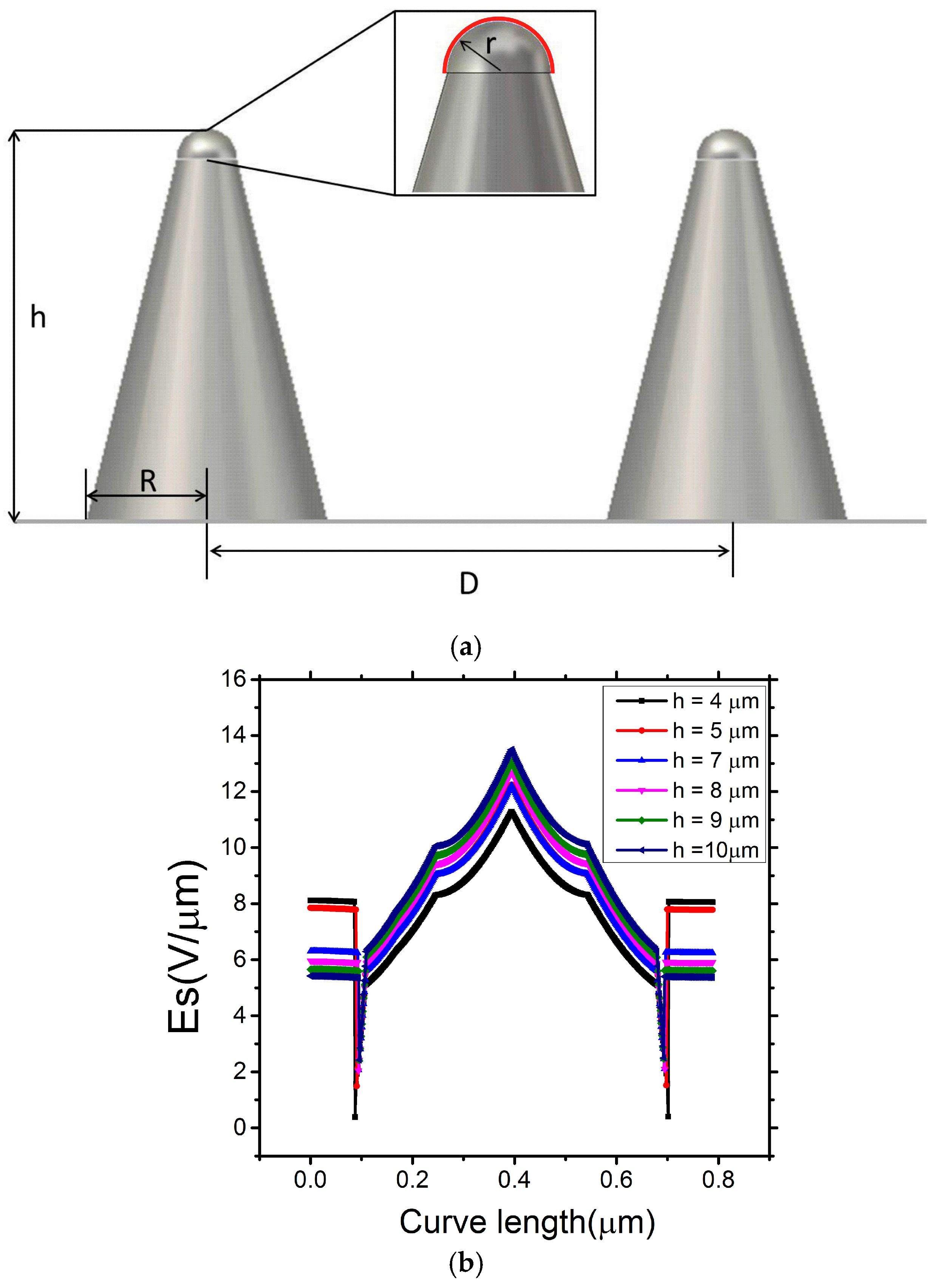
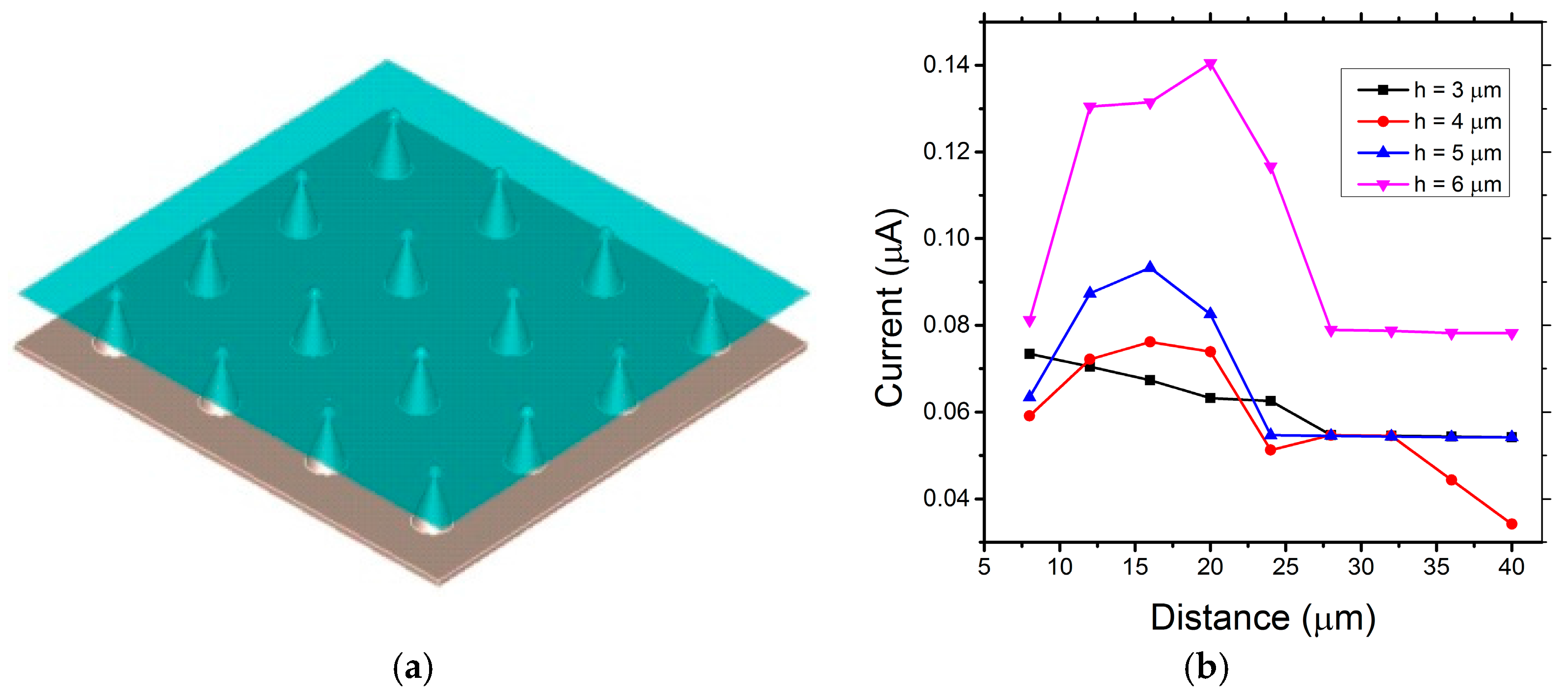
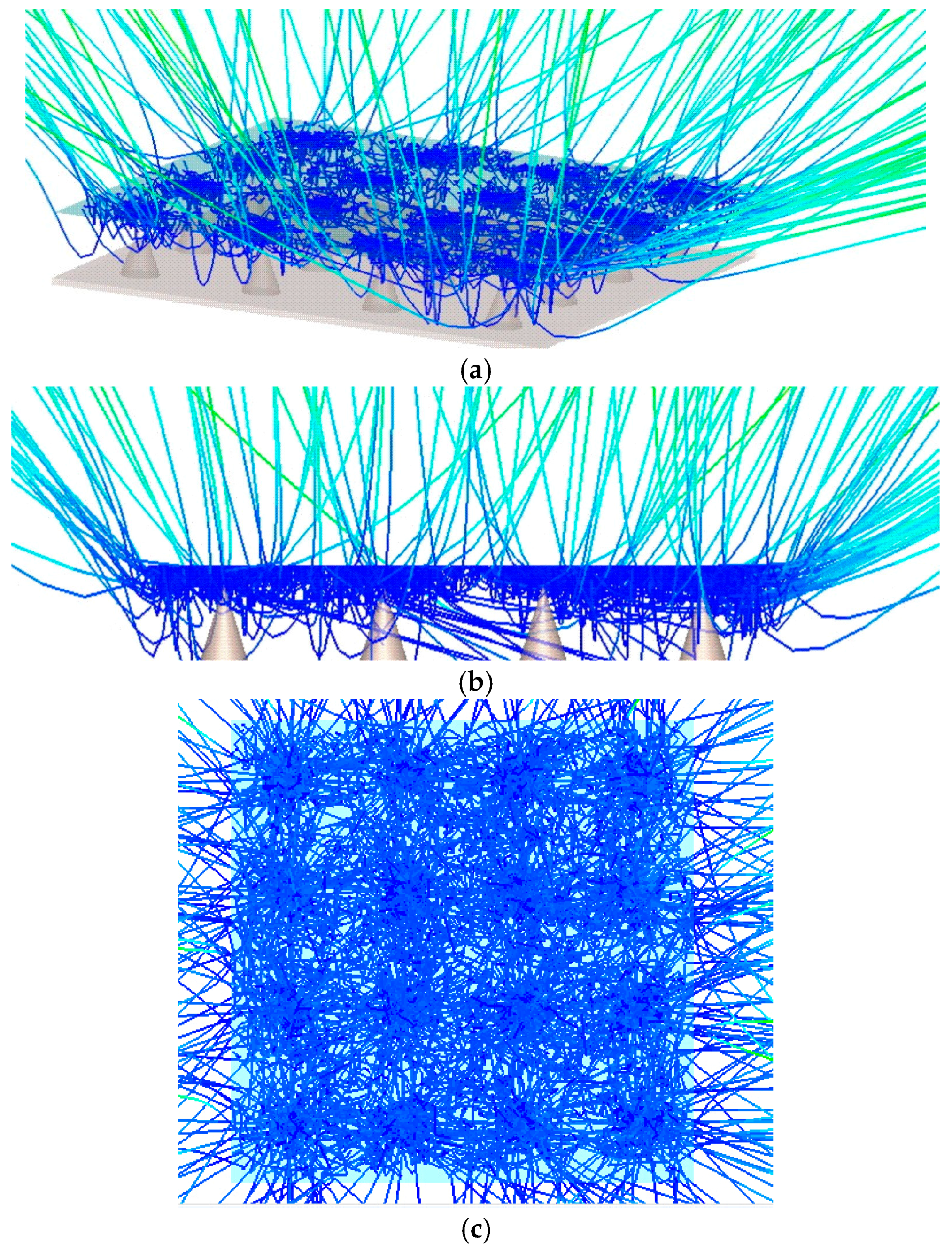
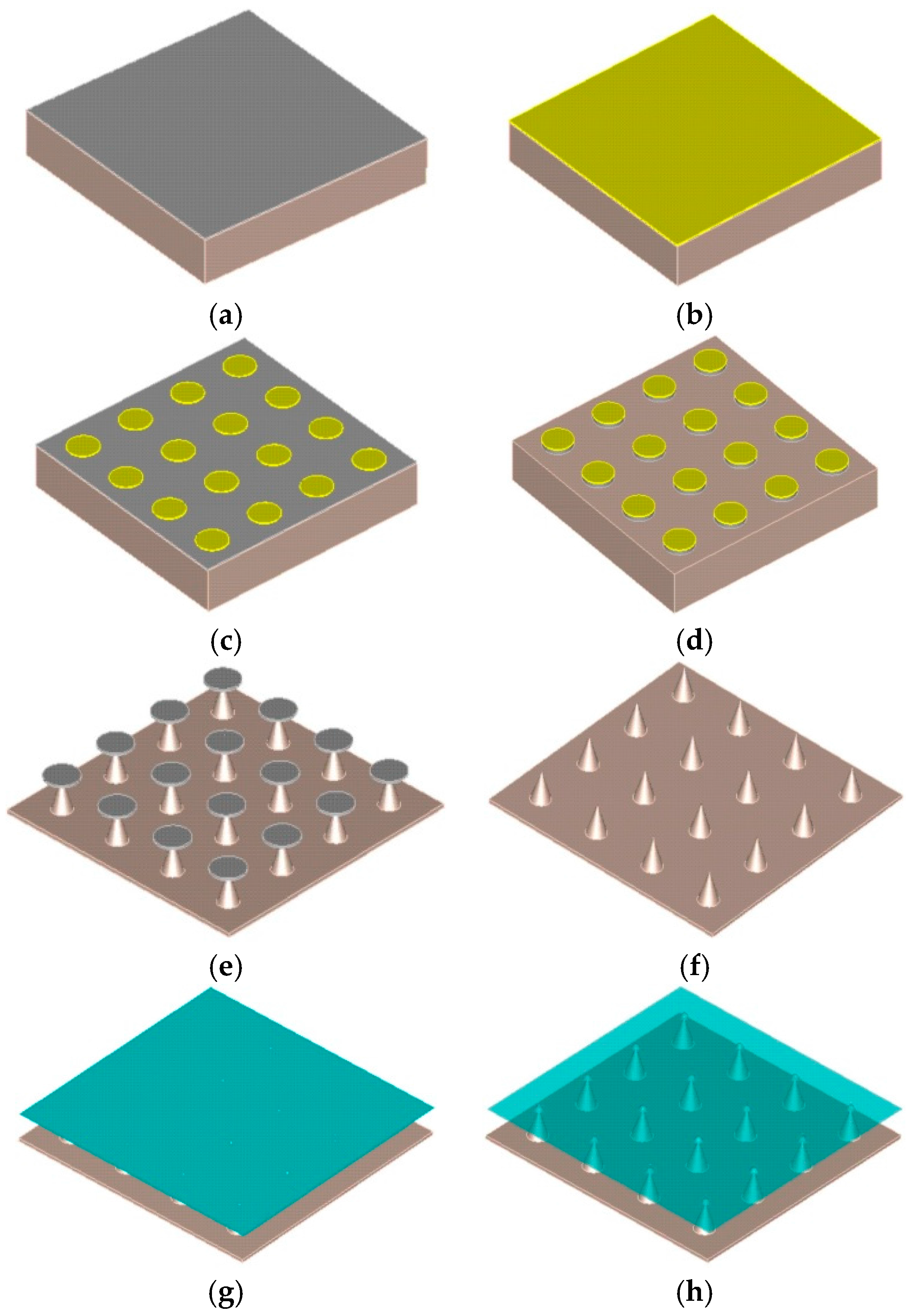
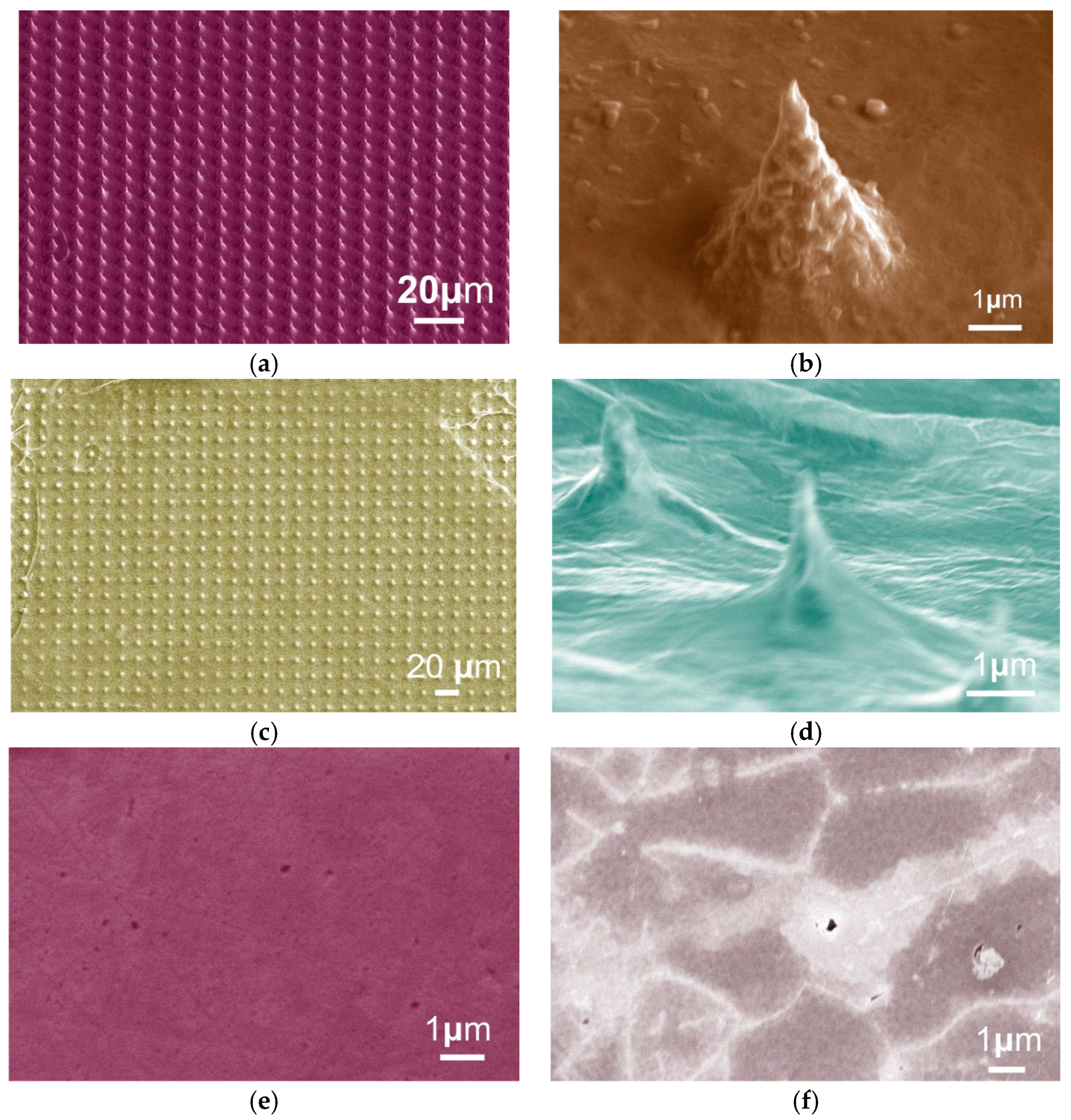
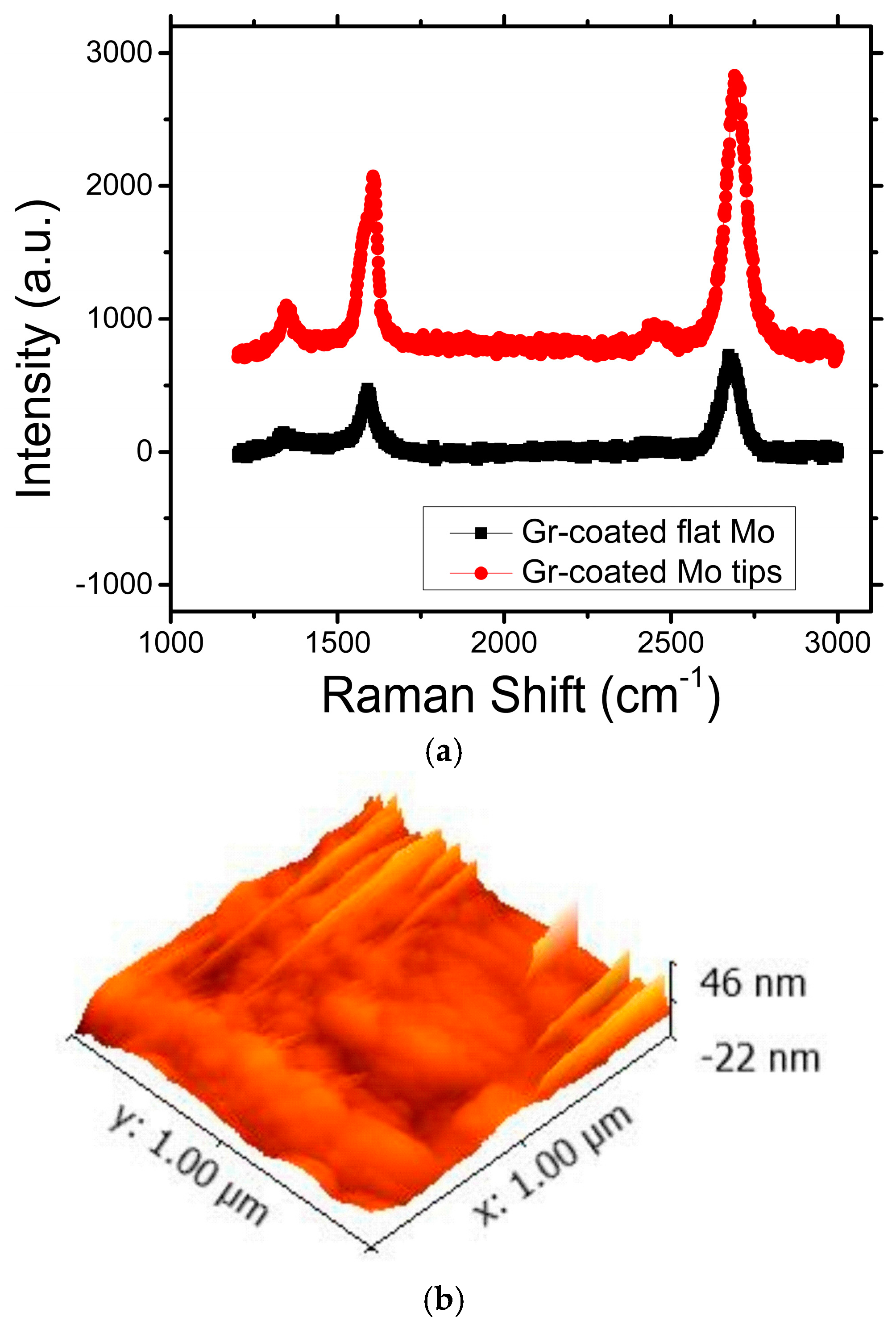
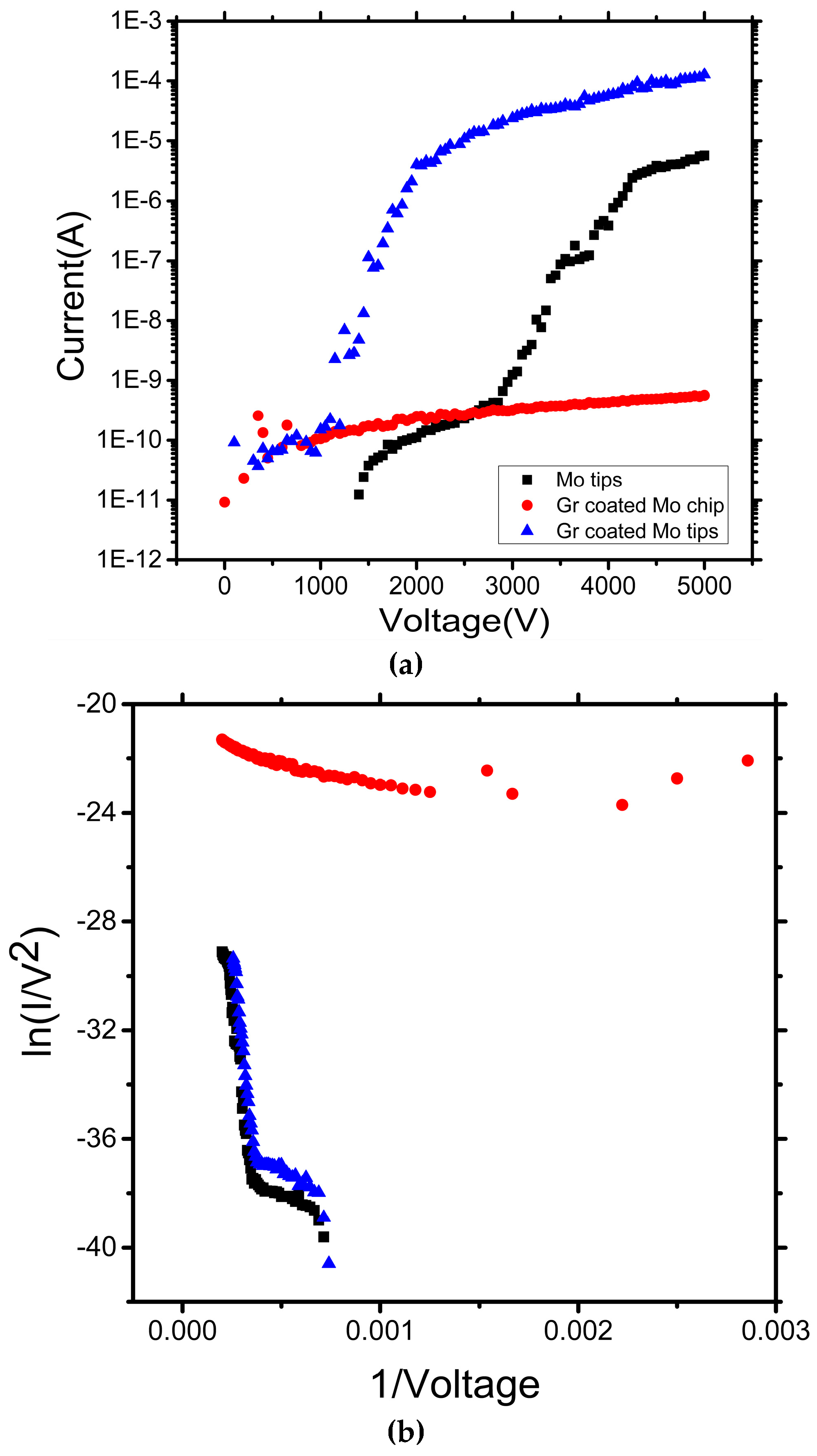
© 2017 by the authors. Licensee MDPI, Basel, Switzerland. This article is an open access article distributed under the terms and conditions of the Creative Commons Attribution (CC BY) license (http://creativecommons.org/licenses/by/4.0/).
Share and Cite
Zhu, N.; Chen, J.; Deng, H.; Di, Y. A Graphene-Coated Mo Tip Array for Highly-Efficient Nanostructured Electron Field Emitters. Micromachines 2018, 9, 12. https://doi.org/10.3390/mi9010012
Zhu N, Chen J, Deng H, Di Y. A Graphene-Coated Mo Tip Array for Highly-Efficient Nanostructured Electron Field Emitters. Micromachines. 2018; 9(1):12. https://doi.org/10.3390/mi9010012
Chicago/Turabian StyleZhu, Ningli, Jing Chen, Hai Deng, and Yunsong Di. 2018. "A Graphene-Coated Mo Tip Array for Highly-Efficient Nanostructured Electron Field Emitters" Micromachines 9, no. 1: 12. https://doi.org/10.3390/mi9010012
APA StyleZhu, N., Chen, J., Deng, H., & Di, Y. (2018). A Graphene-Coated Mo Tip Array for Highly-Efficient Nanostructured Electron Field Emitters. Micromachines, 9(1), 12. https://doi.org/10.3390/mi9010012



